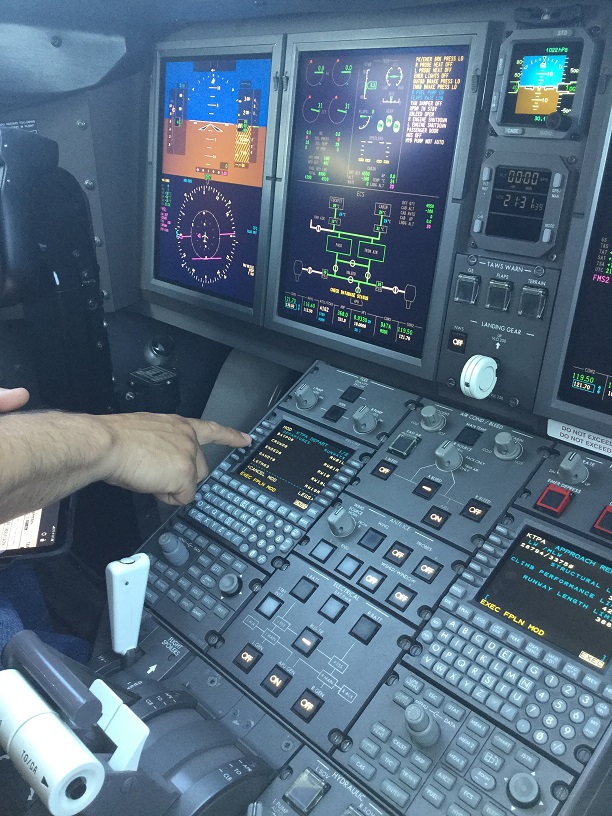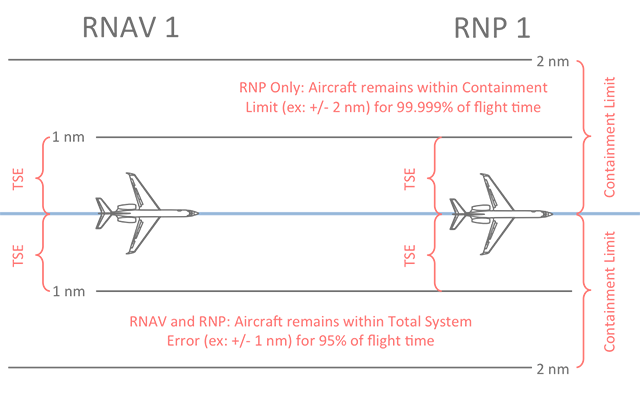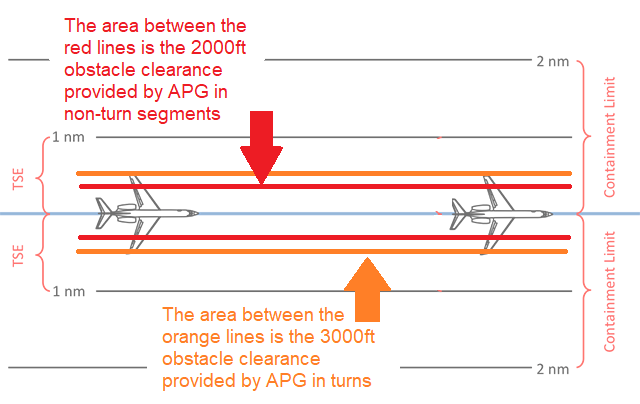We have completed a study that demonstrates a major flaw in the use of products like APG (and others) that use runway analysis as a means of obstacle clearance when used under Part 135, 91, 91K and 125 or even 121 if utilizing standard NavData databases.

Every brand of FMS (we are using the Rockwell Collins here) exhibits the same issue. When entering departure procedures manually (i.e. the departure is not in the FMS database by name), the RNAV / RNP of your system will default to a value of 1 which can NOT be overwritten as a default. Some pilots are under the belief that their system will default to 0.1 or 0.3 if within 30 miles of the airport. This does not appear to be the case for manually entered paths, even when using waypoints that are within the database.
Why is this so important? When the FMS displays an RNP of 1 as in the picture below (which was captured after entering and activating an APG departure) it means that the Total System Error is limited to 1 NM (figure A). In other words, the FMS system calculates a position that is deemed "accurate" if the TSE is limited to +1 nautical mile (6000 feet) of the actual location.

Total System Error is illustrated below.

Figure A
In practical terms, it means that when you are navigating on the magenta line, 95% of the time you will be within 1NM of the actual geographical location without error messaging. The CDI scale will be 1NM and 99.999% of the time you will be within 2 NM as illustrated in figure B. A rather large EPU/APN will allow the aircraft to be outside the obstacle containment area without notification. Enough is it were possible to manually enter an RNP (some newer versions) the latency of alert presentation (upwards of 6 seconds) would allow the aircraft to exit the protected area. Consider, in the best of all circumstances, you are alerted, what would you do? You are not on an approach whereby you can go missed. 
Figure B
APG, and all products that utilize runway analysis as their obstacle clearance protocol, adhere to AC120-91A. The maximum lateral limit (the Obstacle Accountability Area as its defined within the advisory circular) is 2000ft during straight segments and 3000ft during turns. Drawn to scale within figure C below, the obvious problem is seen.

Figure C
Even though, on the PFD, you are right on the magenta line, approximately 50% of the time you will be geographically outside the protected area (orange or red lines).
These "escape" procedures are actually RNP AR Approaches in reverse. AR procedures require specific equipment and crew training, yet the vast majority (99.9%) of operators utilizing runway analysis do not meet the equipment standard (i.e. the procedures are not within their databases by name even if the equipment itself could qualify for RNP 0.3) nor do they have any credible crew training for such procedures. It is common knowledge for those who do provide actual escape procedure training that it takes;
| 



